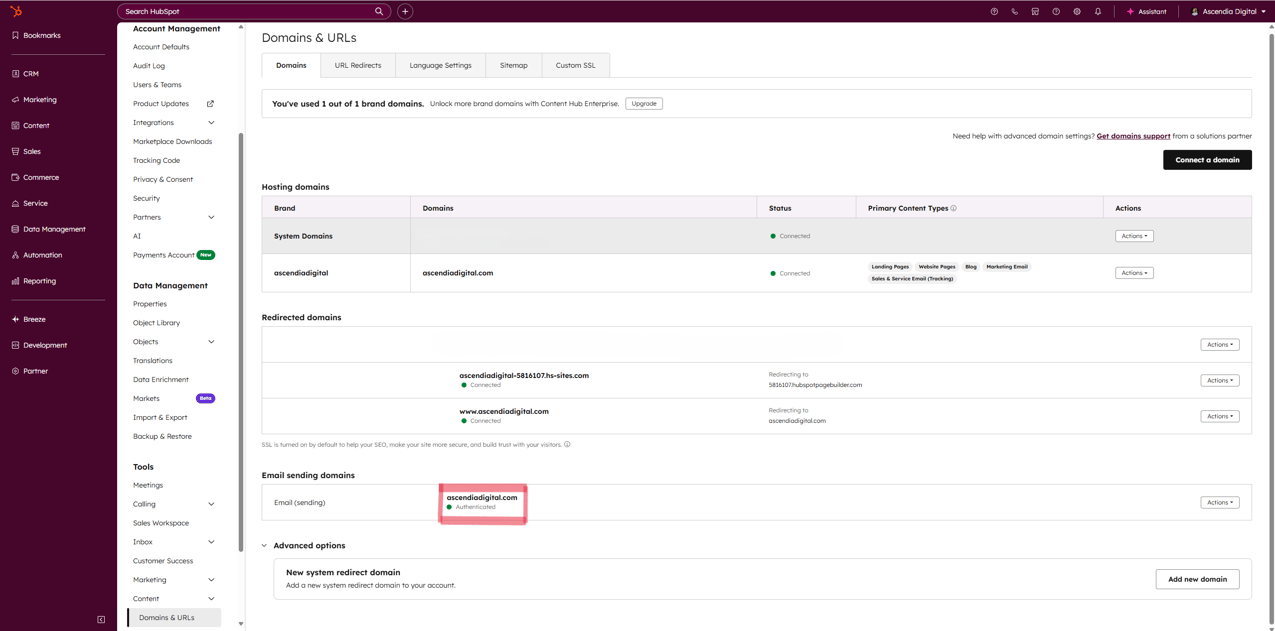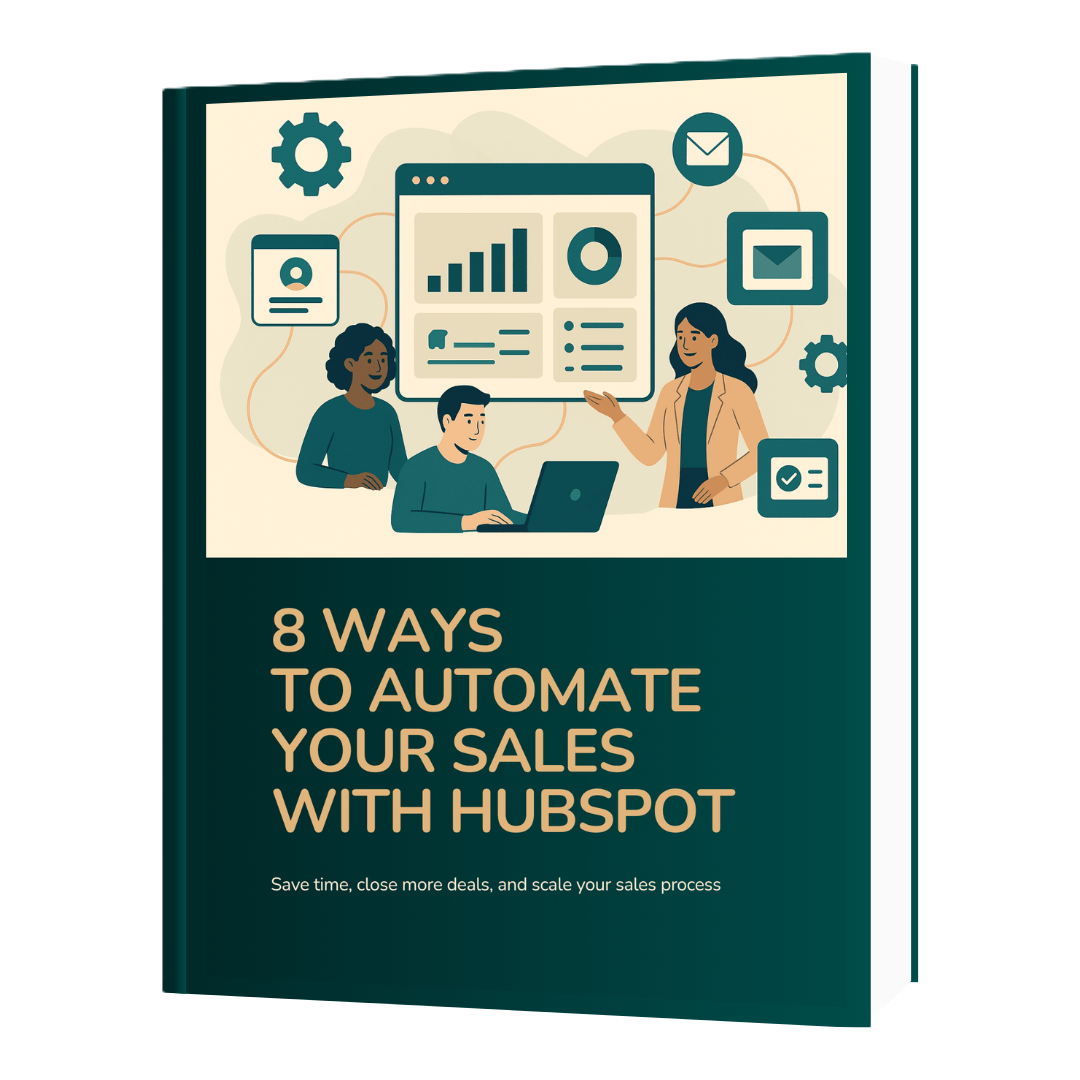
You spent hours crafting the perfect subject line, designing a beautiful email template, and segmenting your list with precision. You hit 'Send' on your HubSpot campaign, expecting a rush of opens and clicks... only to see your open rate plummet. Why? Most likely your email landed in spam.
Even with a great platform like HubSpot, your emails can still end up in spam.
If you’ve ever wondered “Why are my HubSpot emails not reaching the inbox?”, you’re not alone. A nd the problem usually comes down to a mix of technical setup, content, and sender reputation.
The good news? Most of it can be fixed. Here’s what you need to know — and the steps you can take right now to make sure your emails actually reach your audience inbox and stay out of spam.
Table of content
TL;DR: Common Reasons HubSpot Emails Go to Spam
How HubSpot Sends Emails (and Why Deliverability Isn’t Guaranteed)
The 6 Most Common Reasons HubSpot Emails Go to Spam
1. Missing or Incorrect Authentication (SPF, DKIM, DMARC)
5. Sudden Sending Volume Increases
6. Lack of Engagement Signals
How to improve your email deliverability in HubSpot
TL;DR: Common Reasons HubSpot Emails Go to Spam
- Missing or misconfigured domain authentication (SPF, DKIM, DMARC)
- Poor sender reputation
- Sending to cold or purchased lists
- Spammy language or formatting
- Low engagement (opens, clicks) over time
- No permission or improper opt-ins
How HubSpot Sends Emails (and Why Deliverability Isn’t Guaranteed)
The first thing to understand is this: HubSpot (or any Email Service Provider, or ESP) can only send your email; it cannot guarantee deliverability. Once the email leaves HubSpot's servers, the decision—whether it lands in the Inbox, the Promotions tab, or the Spam folder—is entirely up to the recipient’s mailbox provider (like Gmail, Outlook, or Apple Mail).
The 6 Most Common Reasons HubSpot Emails Go to Spam
1. Missing or Incorrect Authentication (SPF, DKIM, DMARC)
What it is: Email authentication proves to inbox providers (like Gmail or Outlook) that your email is legitimate and authorized by your domain. HubSpot recommends setting up SPF, DKIM, and optionally DMARC.
Why it matters: Without authentication, your emails are more likely to be flagged as suspicious and filtered into spam — or rejected entirely.
This is where most businesses fail. If the mailbox provider can’t confirm you are who you say you are, your email is dead on arrival.
The Cause: Your domain’s DNS records aren’t set up or configured correctly. These three records prove your domain’s identity:
- SPF (Sender Policy Framework): This acts like a bouncer’s guest list. It tells the receiving server which IP addresses are authorized to send email on behalf of your domain.
- DKIM (DomainKeys Identified Mail): This is a digital signature that verifies the email hasn’t been tampered with while traveling from HubSpot to the recipient.
- DMARC (Domain-based Message Authentication, Reporting, and Conformance): This is the policy layer that tells the receiving server what to do if the SPF or DKIM checks fail (e.g., quarantine or outright reject the message).
✅ How to Fix It:
- Go to Settings >Content > Domains & URLs in HubSpot

- Make sure your sending domain shows “Connected” and “Authenticated”
- If not, follow the prompts to add SPF/DKIM records to your DNS provider
- Use tools like MXToolbox or Google Postmaster Tools to test
2. Low Sender Reputation
What it is: Sender reputation is like a credit score for your domain/IP. It’s based on your past sending behavior: bounces, spam complaints, engagement rates, etc.
Why it matters: Internet Service Providers (ISPs) use sender reputation to decide whether to deliver your email to the inbox, spam folder, or not at all.
When you send emails through HubSpot (or most email platforms), you're usually using a shared IP, which means your deliverability is partly influenced by the behavior of other HubSpot users on the same IP. While HubSpot actively monitors and manages these IPs to keep reputation high, poor practices by others can still impact your results. If you’re sending high volumes or running critical campaigns, consider upgrading to a dedicated IP to gain full control over your sender reputation.
✅ How to Fix It:
- Check your domain/IP reputation with tools like Google Postmaster Tools - it’s free
- Avoid sudden volume spikes (e.g., don’t go from 500 to 10,000 sends overnight)
- Warm up new domains by gradually increasing send volume
- Maintain a consistent cadence — don’t disappear for months then blast a promo
3. Poor list quality
Poor list quality is one of the main reasons HubSpot emails land in spam.
If your contact list hasn’t been cleaned or verified in a while, your emails might end up in spam — even if your content looks great.
Using bought lists is the worst thing you can do. Those contacts never opted in, and many addresses could be fake or inactive. By sending to them you risk hitting spam traps, which can seriously harm your sender reputation and make future emails harder to deliver.
The good news: HubSpot automatically removes hard bounces and stops sending to those addresses to protect your domain reputation.
Still, it’s up to you to keep your list healthy.
Here’s how to stay safe:
- Only email people who opted in to hear from you.
- Regularly clean out inactive or unengaged contacts.
- Use an email verification tool before importing new contacts into HubSpot.
A clean, verified list keeps your emails landing in the inbox — and helps HubSpot’s deliverability tools work exactly as they should.
4. Spammy Content or Design
What it is: Certain keywords, formats, and design practices can trigger spam filters — even if your intentions are good.
Why it matters: Spam filters analyze email structure, language, and HTML. Poor formatting or spammy phrases are red flags.
✅ How to Fix It:
- Avoid overused spam triggers like: “Buy now!”, “Free $$$”, “Urgent deal”
- Don’t use all caps, excessive punctuation, or image-only emails
- Keep a healthy text-to-image ratio
- Always include a plain-text version of your email
- Run tests using tools like Mail-Tester or GlockApps
💡 Tip: HubSpot’s drag-and-drop editor keeps your code clean, but always preview and test before sending.
5. Sudden Sending Volume Increases
Sending too many emails at once, especially to new or large lists, can trigger spam filters. ISPs see sudden spikes in volume as suspicious behavior.
How to avoid it: start by emailing your most engaged contacts first and gradually increase your sending volume over several days or weeks. This “warm-up” approach protects your sender reputation and improves deliverability.
6. Lack of Engagement Signals
What it is: Gmail and other providers monitor how recipients interact with your emails — opens, clicks, replies, or deletes.
Why it matters: If engagement is low over time, inbox providers may deprioritize your emails or mark them as spam.
✅ How to Fix It:
- Segment based on recent activity (opened or clicked in the last 30 days)
- Send personalized, relevant content using tokens and smart rules
- Use re-engagement campaigns to win back cold contacts
- Stop emailing disengaged users — it does more harm than good
 How to improve your email deliverability in HubSpot
How to improve your email deliverability in HubSpot
Follow this checklist to prevent spam issues and improve email deliverability:
- Authenticate Your Domain
- Set up SPF, DKIM, and DMARC in HubSpot.
- Set up SPF, DKIM, and DMARC in HubSpot.
- Protect Your Sender Reputation
- Monitor domain/IP reputation regularly using tools liken Google Post Master
- Avoid sudden spikes in send volume; warm up new domains gradually.
- Maintain a consistent sending cadence.
Keep in mind these important indicators:
| Bounce rate | (<1%) |
| Unsubscribe rate | (<0.3%) |
| Spam reports | (<0.1%) |
- Keep Your List Clean
- Only email opted-in contacts.
- Remove inactive or unengaged users.
- HubSpot automatically stops sending to hard bounces, but regular list hygiene is key.
- Verify new contacts before importing.
- Avoid Spammy Content & Design
- Skip spam-trigger words like “Buy now!” or “Free $$$.”
- Don’t use all caps, excessive punctuation, or image-only emails.
- Keep a healthy text-to-image ratio and always include a plain-text version.
- Warm Up Sending Volume
- Start with your most engaged contacts.
- Gradually increase volume over several days or weeks to prevent spam flags.
- Boost Engagement Signals
- Segment based on recent opens, clicks, or replies.
- Use personalization tokens and smart content to keep emails relevant.
- Run re-engagement campaigns for cold contacts.
- Stop emailing disengaged users
Conclusion: Keep Your HubSpot Emails Out of Spam
Landing in spam isn’t a HubSpot problem — it’s a deliverability problem. Most issues come down to domain setup, list hygiene, and engagement. The good news? Every one of these can be fixed with the right habits and consistent monitoring.
Authenticate your domain, keep your contact lists clean, send content people actually want to read, and build engagement over time. HubSpot gives you the tools — it’s how you use them that determines inbox success.
Still not sure why your HubSpot emails are going to spam?
Let’s fix it together. Book a free consultation call and I’ll help you identify what’s holding your deliverability back and how to get your emails back in the inbox.
